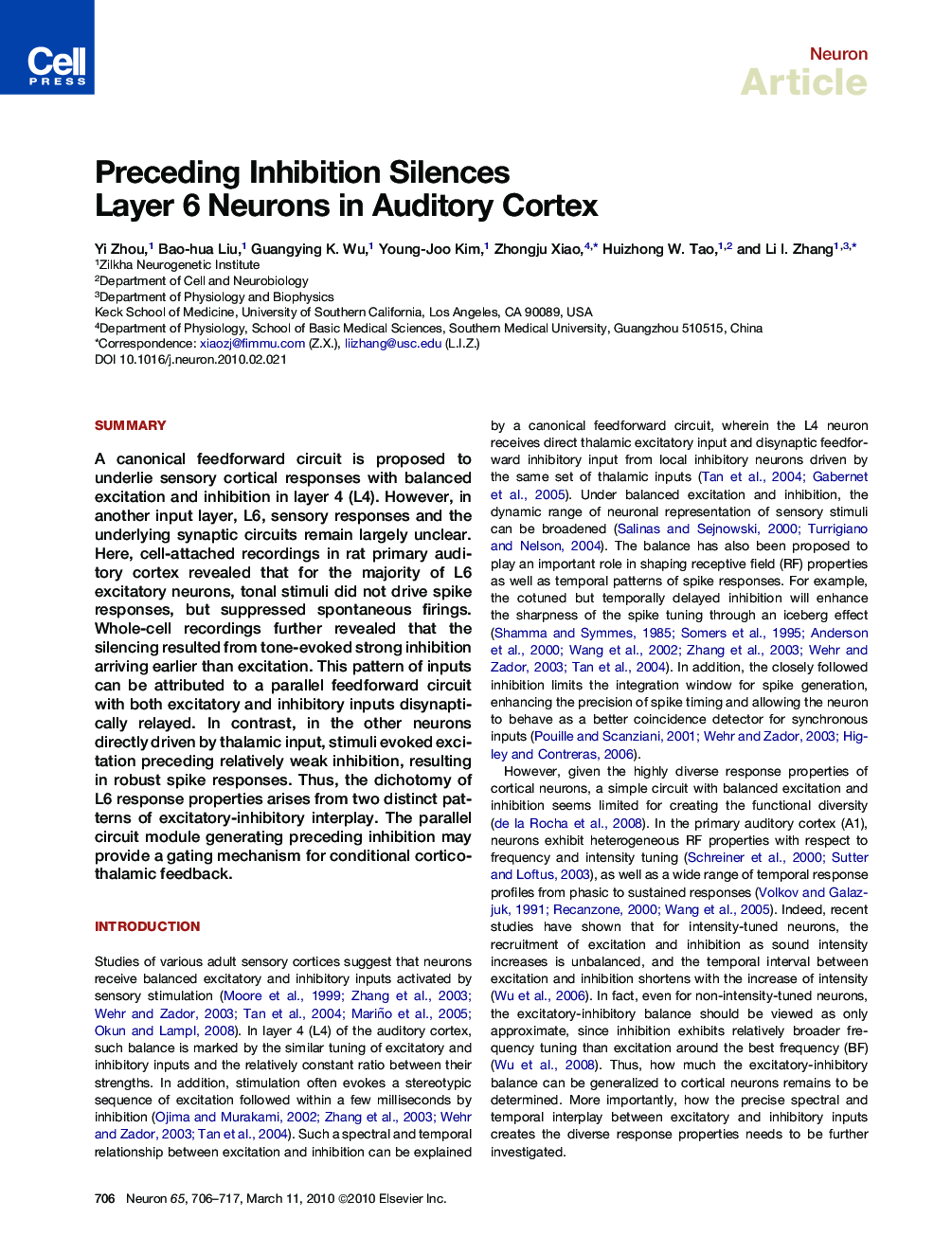| Article ID | Journal | Published Year | Pages | File Type |
|---|---|---|---|---|
| 4322561 | Neuron | 2010 | 12 Pages |
SummaryA canonical feedforward circuit is proposed to underlie sensory cortical responses with balanced excitation and inhibition in layer 4 (L4). However, in another input layer, L6, sensory responses and the underlying synaptic circuits remain largely unclear. Here, cell-attached recordings in rat primary auditory cortex revealed that for the majority of L6 excitatory neurons, tonal stimuli did not drive spike responses, but suppressed spontaneous firings. Whole-cell recordings further revealed that the silencing resulted from tone-evoked strong inhibition arriving earlier than excitation. This pattern of inputs can be attributed to a parallel feedforward circuit with both excitatory and inhibitory inputs disynaptically relayed. In contrast, in the other neurons directly driven by thalamic input, stimuli evoked excitation preceding relatively weak inhibition, resulting in robust spike responses. Thus, the dichotomy of L6 response properties arises from two distinct patterns of excitatory-inhibitory interplay. The parallel circuit module generating preceding inhibition may provide a gating mechanism for conditional corticothalamic feedback.
► Majority of layer 6 pyramidal neurons in the auditory cortex appear silent ► Preceding and strong inhibition suppresses the spike output of silent neurons ► A noncanonical parallel disynaptic circuit underlies silent neurons in layer 6 ► The layer 6 circuit may provide a conditional corticothalamic feedback
